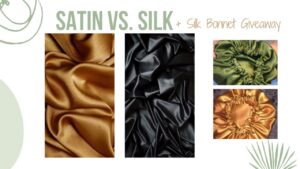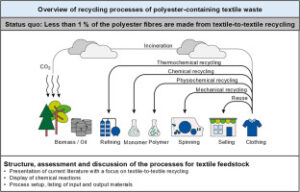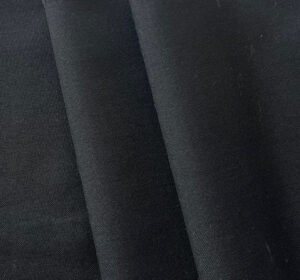Is Velvet or Satin Better for Hot Weather?
Choosing the right fabric for hot weather is crucial in fashion and sewing, as it affects comfort and style. Velvet and satin are popular choices, but which is better for warm climates? This article explores their properties, benefits, and challenges to help you decide.
Introduction
Fabric compatibility is essential in fashion and sewing, influencing comfort, style, and functionality. Velvet and satin, both luxurious fabrics, offer unique qualities but differ significantly in their suitability for hot weather. This article will help you understand which fabric is better for warm climates and how to make informed decisions when selecting materials.
Compatibility Analysis
When it comes to hot weather, NO, velvet and satin are not ideal choices due to their distinct properties. Velvet, with its plush texture, tends to retain heat, making it less suitable for warm climates. Satin, while smoother and slightly cooler, can still trap heat depending on its fiber content. Key factors like texture, weight, and breathability determine their compatibility with hot weather.
Key Factors:
- Texture: Velvet’s pile texture is thicker and warmer, whereas satin’s smooth finish provides a cooler feel.
- Weight: Velvet is heavier, contributing to heat retention, while satin is lighter and drapes well.
- Breathability: Neither fabric is highly breathable, but satin can offer slightly better air circulation.
- Care Requirements: Both fabrics require delicate care, but satin may be easier to maintain in hot weather.
- Durability: Velvet is generally more durable but less practical for heat.
Fabric Properties Comparison Table
| Property | Velvet | Satin |
|---|---|---|
| Fiber Content | Natural (cotton) or synthetic | Natural (silk) or synthetic |
| Weight and Thickness | Heavy and thick | Light to medium |
| Breathability | Low | Moderate |
| Stretch and Elasticity | Minimal | Varies (depends on blend) |
| Wrinkle Resistance | Good | Moderate |
| Care Instructions | Dry clean or gentle wash | Hand wash or gentle cycle |
| Durability | High | Varies (depends on fiber) |
Benefits of Mixing These Fabrics
While velvet and satin aren’t ideal for hot weather individually, mixing them in cooler climates can offer benefits:
- Enhanced Texture and Visual Interest: Combining velvet’s plushness with satin’s sheen creates a rich, luxurious look.
- Improved Comfort and Performance: Satin’s smoothness can offset velvet’s heaviness, providing a balanced feel.
- Better Drape and Movement: Satin adds fluidity to velvet’s structure, enhancing garment flow.
- Cost-Effectiveness: Mixing fabrics can be more economical by using less of the expensive velvet.
- Seasonal Versatility: While not for summer, they are perfect for transitional seasons.
- Design Possibilities: The contrast in textures opens up creative design opportunities.
Potential Challenges
Mixing velvet and satin presents challenges, especially in hot weather:
- Different Shrinkage Rates: Pre-wash fabrics to minimize issues.
- Conflicting Care Requirements: Opt for dry cleaning if unsure.
- Texture Clash or Pilling: Use interfacing to manage texture differences.
- Seam Puckering: Use appropriate needles and tension settings.
- Color Bleeding or Fading: Test for colorfastness before washing.
Sewing & Styling Tips
- Sewing Techniques: Use a walking foot for even feed; select a fine needle for satin.
- Needle and Thread: Use a universal needle size 70/10; choose polyester thread for durability.
- Interfacing and Stabilizer: Use lightweight interfacing for satin areas.
- Seam Finishing: French seams or serging work well.
- Pattern Selection: Choose simple patterns to let fabrics shine.
- Styling Ideas: Pair velvet jackets with satin blouses for evening wear.
Care & Maintenance Guide
- Washing Instructions: Hand wash or use a gentle cycle with cold water.
- Drying Recommendations: Air dry flat to prevent distortion.
- Ironing and Steaming Tips: Use a low heat setting and a pressing cloth.
- Stain Removal: Spot clean velvet; use gentle stain removers on satin.
- Long-Term Care: Store in a cool, dry place; avoid direct sunlight.
FAQ Section
-
Can you wash velvet and satin together?
- It’s best to wash them separately due to different care needs.
-
Will velvet shrink more than satin?
- Yes, velvet is more prone to shrinkage; pre-wash before sewing.
-
What needle size should I use for sewing velvet and satin together?
- A size 70/10 universal needle works well for both fabrics.
-
Can you mix velvet and satin in one garment?
- Yes, but consider design and care requirements carefully.
-
How do you prevent seam puckering when combining these fabrics?
- Use a walking foot and adjust tension settings.
-
Is it okay to mix velvet and satin for upholstery?
- It’s possible, but consider durability and care challenges.
-
What’s the best way to finish seams with these fabrics?
- French seams or serging provide clean finishes.
By understanding the properties and challenges of velvet and satin, you can make informed decisions about their use in fashion and sewing. While neither is ideal for hot weather, their luxurious qualities make them a great choice for cooler climates and creative projects.



Leave a Reply